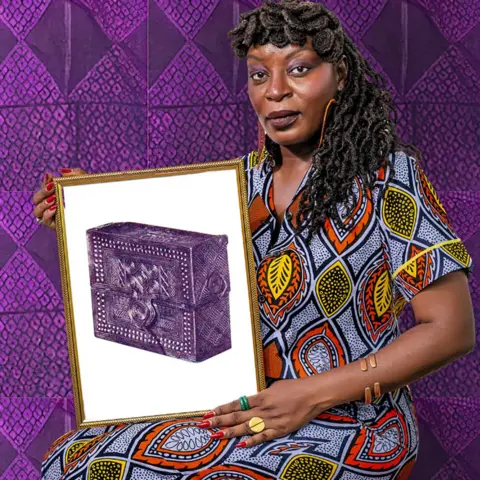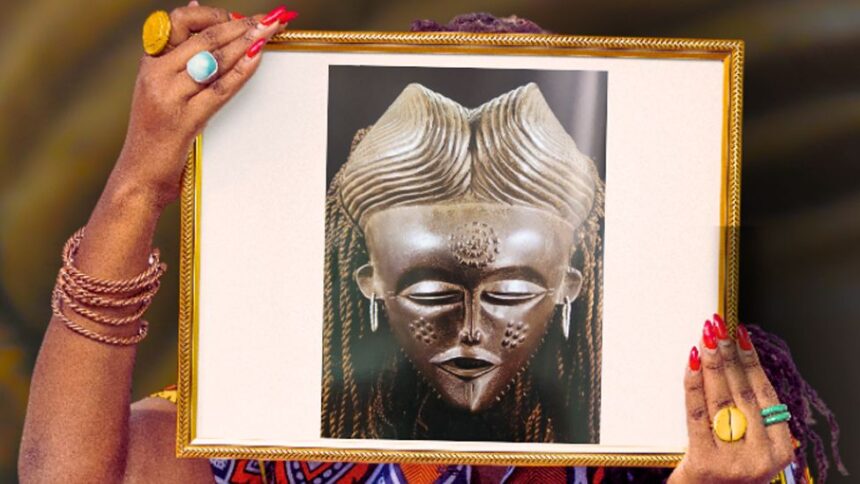In a world where colonial narratives have long overshadowed indigenous African histories, Zambia’s Women’s History Museum is rewriting the script—quite literally. At the center of this intellectual revolution is Sona, an ancient and sophisticated African writing system that not only challenges myths of illiteracy but also reclaims women’s critical roles in knowledge preservation.
Decoding Sona: Africa’s Hidden Language of Symbols

The Sona script, also known as Tusona, originates from the Chokwe, Luchazi, and Luvale people living in the borderlands of Zambia, Angola, and the Democratic Republic of Congo. Using geometric drawings made in sand, etched onto sacred masks, or inscribed into hunting tools, this system conveyed stories, mathematical knowledge, cosmic references, and even community laws.
But unlike popular writing systems of the world, Sona was mainly passed down through oral traditions and visual patterns—making it hard to detect or document through colonial lenses. The fact that women were the primary custodians of this system has further contributed to its historical erasure.
Women’s History Museum of Zambia: A Digital Reawakening

The rediscovery of Sona is largely due to the groundbreaking efforts of the Women’s History Museum of Zambia, founded by Samba Yonga and Mulenga Kapwepwe. In their Frame Project, they photograph and post artefacts on social media to reclaim pre-colonial heritage and showcase women’s critical societal roles.
“We’ve grown up being told that Africans didn’t know how to read or write,” says Yonga. “But Sona proves otherwise—we had our own intricate systems of knowledge transmission, beauty, love, health, and governance.”
A Global Treasure Hunt for Lost Zambian Artefacts
Ironically, many of Zambia’s cultural artefacts are not in Africa, but in European museums. Yonga’s curiosity was piqued when she visited the National Museums of World Cultures in Sweden in 2019 and discovered that it held over 650 Zambian objects—including sacred cloaks, ceremonial masks, and the famous hunters’ toolbox engraved with Sona symbols.
One remarkable find was a set of 20 leather cloaks from the Batwa people, beautifully designed with geometric patterns. These cloaks, crafted from antelope hide, were worn by women or used to protect babies from harsh weather. Sadly, in the Bengweulu region where these cloaks originated, there is no living memory of their creation. Colonial disruptions have permanently severed many links between communities and their ancestral knowledge writing system.

Symbolism Beyond Words: Tools, Cloaks, and Gravestones
Beyond Sona, the museum uncovered other objects with hidden meanings. One example is the grinding stone, used exclusively by women in the Tonga community. After a woman’s death, this simple kitchen tool was placed on her grave—symbolizing her lifelong contribution to food security and community survival. “What may look mundane is actually a powerful symbol of respect,” explains Yonga writing system.
Reclaiming African Identity Through History
The Frame Project’s goal is not just to document artefacts but to decolonize African history. Through vibrant photography, archived documents, and social media engagement, the museum challenges distorted colonial views and celebrates Africa’s intellectual and cultural legacy.
“We had prosperity, intellect, and environmental wisdom,” says Yonga. “Now there’s a resurgence—a hunger—to reconnect with who we truly are.”
For young Africans, the project offers more than historical insights—it provides a framework for identity and pride. “Understanding who I am historically, socially, and emotionally has changed how I interact with the world,” Yonga adds.
Conclusion: Changing the Narrative, One Symbol at a Time
As social media posts about Sona go viral, one thing becomes clear: African societies were never devoid of knowledge. They had their own codes, their own philosophies, and their own systems of literacy. The rediscovery of these artefacts is not just academic—it’s a profound act of cultural restoration and resistance.
Visit the Women’s History Museum of Zambia on Instagram to see more powerful visuals and learn how ancient artefacts are telling new stories in a digital age.









